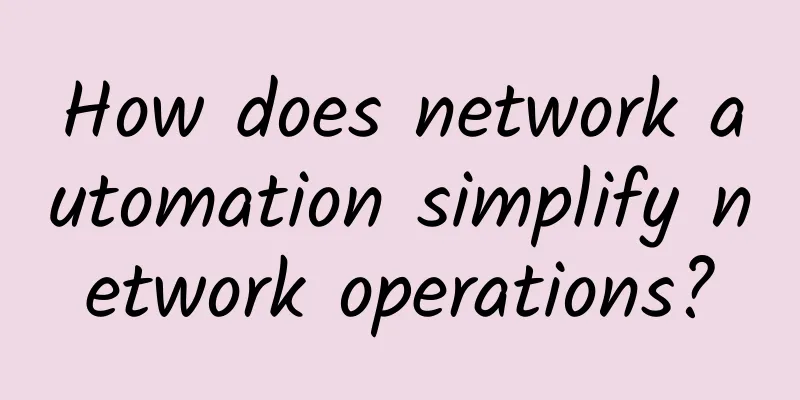Expert Viewpoint: Looking into the future of the Internet

How will businesses’ approach to networking evolve in 2023?As mobile users expect more immersive experiences on their devices, the demand for bandwidth will continue to grow. Current IT equipment is evolving to deliver higher throughput on wired networks, from 1G to 2.5/5 or 10G, and on wireless networks, which are fully adopting Wi-Fi 6 technology. Both evolutions need to happen in parallel, with Wi-Fi 6 requiring high-speed wired equipment with 2.5G or 5G to deliver its full potential, and wired switches need to connect to Wi-Fi 6 access points to use all available bandwidth. Enterprises will need to make network upgrades in a gradual manner, starting with wired equipment to build out the infrastructure, getting ready to deploy new Wi-Fi 6 access points, and then migrating Wi-Fi from current implementations to Wi-Fi 6 once they are ready. What are the most pressing new needs?The number of attacks on IT services is growing exponentially, and preventing and protecting corporate assets will become a key initiative. This will lead to the redesign of IT services to make them more resilient in different aspects. Network security, disaster recovery, power redundancy and network resilience are the main aspects that enterprises need to consider. Enterprises are also increasingly aware that maintaining and protecting their own networks is a very difficult task, so we expect that outsourcing to managed service providers who provide remote monitoring, management and network security services will continue to grow. Which vertical markets will have to face the most significant changes and why?Building management faces severe challenges due to the increase in energy costs. One way to minimize this impact is to adopt a "smart building" approach, where all different services rely on a reliable network. From monitoring of all aspects of the building, PoE lighting, DVS, access control, etc., the network is the core of the smart building. This will be a revolution in building management, but will bring huge benefits such as reduced energy consumption, improved comfort and safety of occupants, and increased occupancy of the building. The manufacturing industry is undergoing significant changes due to IT/OT integration and the adoption of edge computing. This requires the evolution of the network to develop a unified infrastructure with high-performance and secure architecture and capabilities to protect the most sensitive part of the enterprise, namely production. Will the network landscape change with the evolution of 5G? How will it change?5G and Wi-Fi are seen as competitors in terms of mobile user service coverage, and they are currently competing for outdoor solutions where Wi-Fi is not an option (for example, data transmission outside an enterprise). 5G will attempt to erode the Wi-Fi market by moving in the direction of traditional Wi-Fi services, starting with enterprise outdoor access and then to non-controlled temperature environments (for example, warehouses). Eventually, it will try to take some space in indoor access. In response, Wi-Fi will evolve from 6 to 7 to improve performance and maintain its market and always be able to provide higher speeds within its coverage area. What new trends will emerge or solidify in the next year?Wi-Fi will continue to grow as the primary access technology, requiring more powerful infrastructure and advanced feature sets to support the growing needs of users. The ability to manage mobility, device location, and the ability to autonomously adapt to changes in the environment will be key features of new wireless solutions. To accommodate this increase in complexity, intelligent network management tools incorporating elements of artificial intelligence will become more widely adopted. What new skills are needed to cope with innovation?The skills of the IT team need to be developed; IT engineers need to be able to combine network management with network security, but also control all other services running on the network (e.g. DVS or building automation). To enable this new skill, a new family of tools is needed to automate most IT activities and provide a complete view of any aspect of the network in a simple way and recommend actions that human operators should take. Eventually, once full intent-based management tools become mainstream, these actions will also be automated. Networking and security, a more powerful combination?The network is the path attackers use to reach their targets, and protecting the network is the first line of defense, which will become increasingly important. Firewalls and AI-based systems that can detect attacks, along with autonomous security systems that can take immediate action and create self-defending networks, will become the obvious way to protect corporate assets. |
<<: 5G and Net Zero: Can the Two Overlap?
>>: Architect: We are more afraid of 200 than 404!
Recommend
The ultimate secret to speeding up WiFi is here!
The previous two WeChat articles "Your offic...
What is edge computing in the 5G era?
You’ll probably be hearing a lot about edge compu...
RAKsmart: Hot-selling servers, Hong Kong/Korea/Japan/US San Jose dedicated servers starting from $46/month
RAKsmart released information about its promotion...
SaltyfishTech Germany 9929 package free upgrade, 15% off for quarterly payment, $19/quarter-dual core/1GB/15GB/1.15TB@300Mbps
SaltyfishTech (咸鱼云) recently upgraded the Frankfu...
Application of Passive WDM Technology in 5G Fronthaul
Labs Guide Passive WDM technology is the main tec...
Why is optical fiber cheaper than noodles?
[[182802]] According to a report released by mark...
By 2025, the 5G core market size will reach US$9.497 million
[[380039]] According to ResearchAndMarkets, the g...
NGINX Sprint China 2022 Conference: Embracing open source to help modernize applications
Recently, the NGINX Sprint China 2022 conference ...
Japanese media disclosed: The United States will set up a 5G multilateral fund to contain China
According to a report by Japan's Yomiuri Shim...
Justhost offers 20% off on US data centers, 200M unlimited traffic starting at $1.65/month
The last time I shared information about Justhost...
"4.5G": LTE-Advanced Pro users will grow rapidly
According to foreign media reports, market resear...
Innovation empowers and builds the foundation for the future-"2021 China IPv6 Innovation and Development Conference" was held in Beijing
In order to implement the deployment requirements...
Demand is holding back technology. WiFi6 is not yet popular. 6E is coming.
As 5G technology develops rapidly, Wi-Fi technolo...
Justhost: Multiple data centers in Russia/US, 200Mbps and unlimited data, starting from $1.96/month, Chinese/English/Russian pages available
Justhost recently adjusted its website pages and ...
The three major telecom operators earned 387 million yuan a day in 2020
On March 25, China Mobile released its 2020 perfo...









